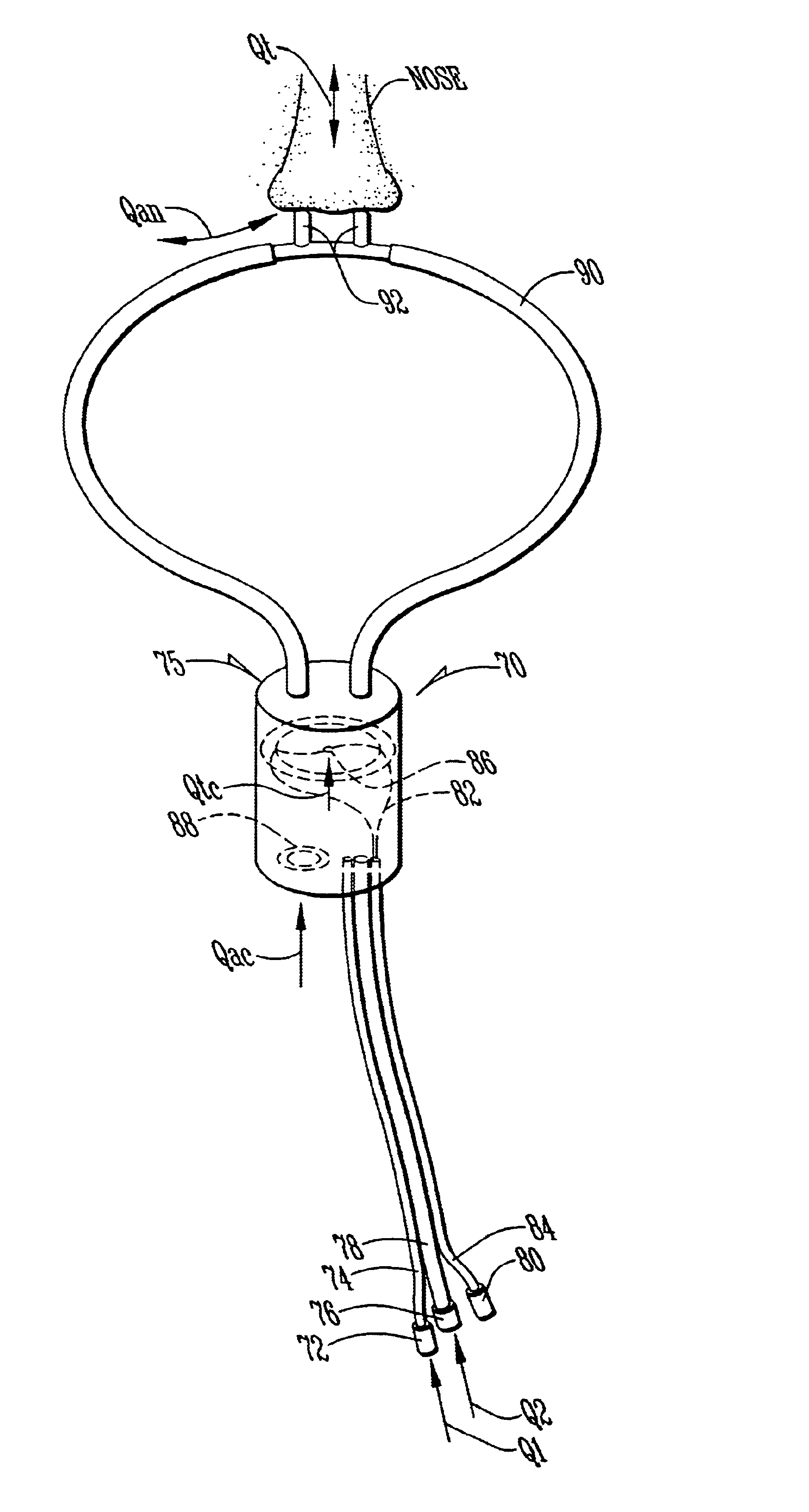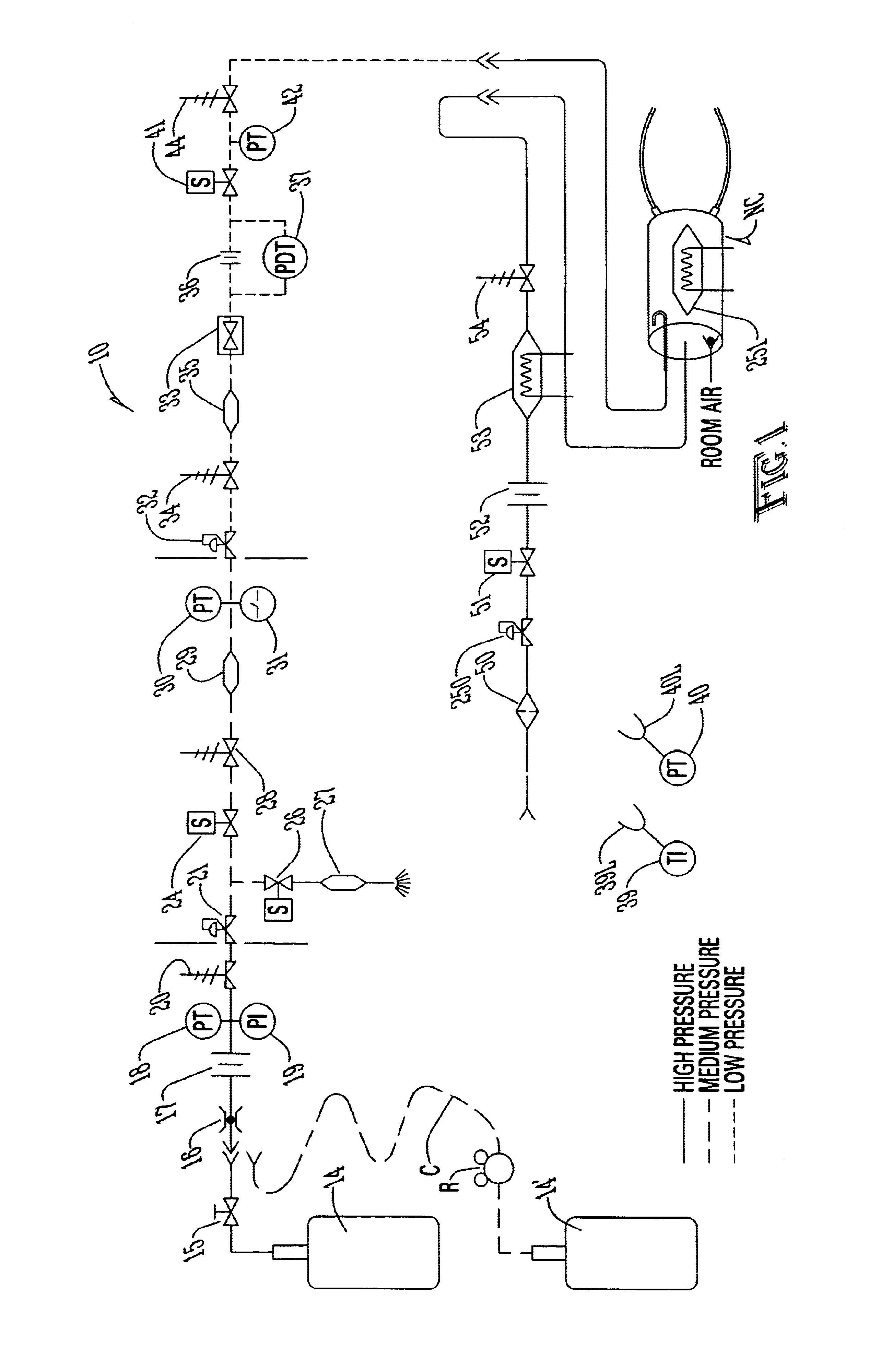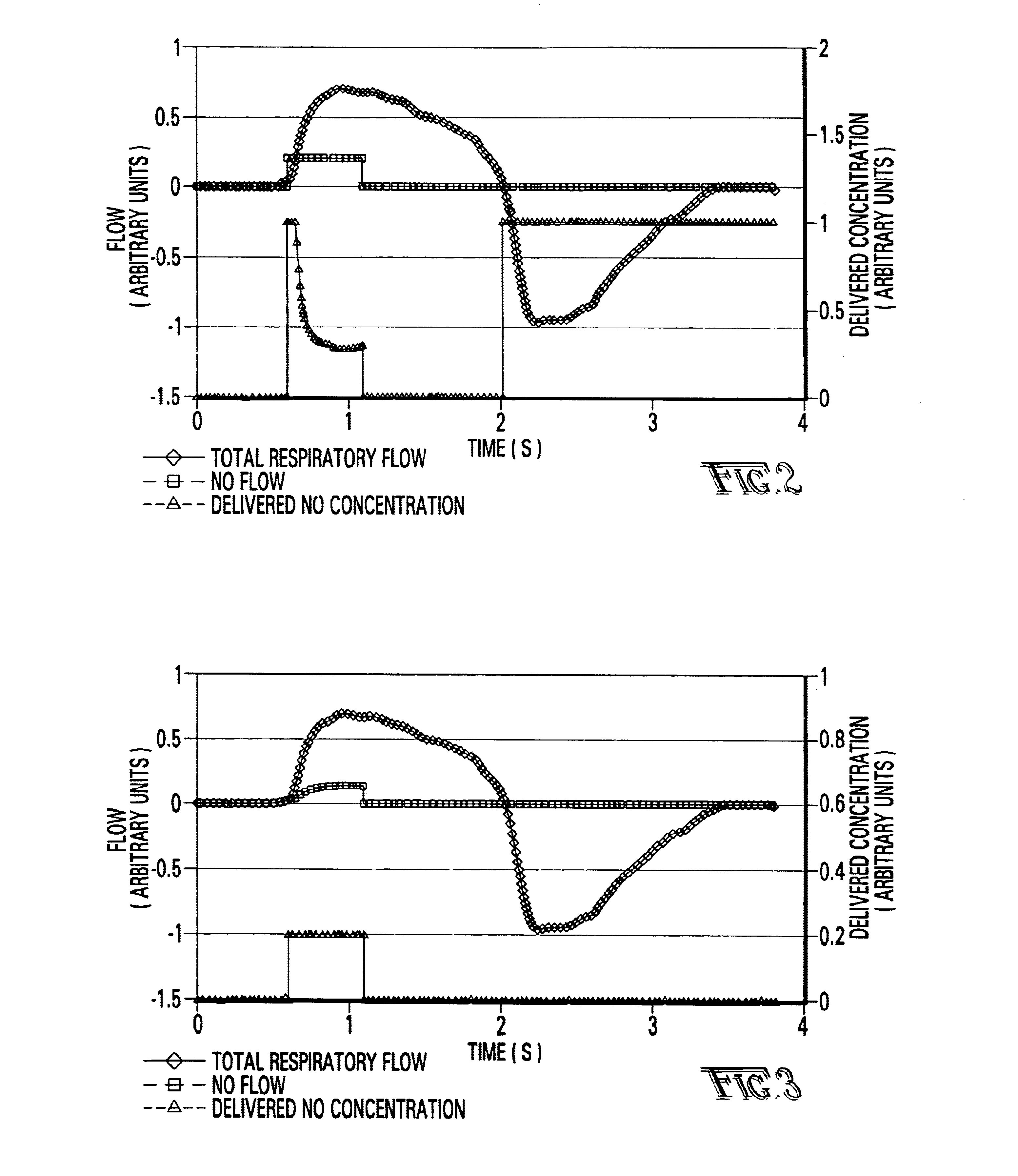System and elements for managing therapeutic gas administration to a spontaneously breathing non-ventilated patient
a technology for managing systems and elements, applied in the direction of valve details, respiratory masks, medical devices, etc., can solve the problems of large volume of air and/or oxygen to be supplied, increase adverse bioeffects, and reduce the effect of gas waste, small cannula latency, and small outlet lumen latency
- Summary
- Abstract
- Description
- Claims
- Application Information
AI Technical Summary
Benefits of technology
Problems solved by technology
Method used
Image
Examples
Embodiment Construction
Other objects, features and advantages of the invention will become apparent from a consideration of the following detailed description and the accompanying drawings.
Overall System
Referring first to FIG. 1, a description of the overall system for administering therapeutic gas to a spontaneously breathing, non-ventilated patient will be described. It is noted that for reference, unless otherwise stated, the terms "upstream" and "downstream" will refer to a flow direction of gas from a source toward a patient. Other terms such as "inlet" and "outlet" will refer to the same flow direction. The overall system 10 is shown schematically and includes a source of first compressed gas 14 which is fluidically connected via a valve 15 and a pressure equalization valve 16 to a flow restrictor 17. Alternatively, a large source of gas 14' can be connected via a pressure regulator R which reduces the pressure and a flow conduit C to the inlet of the system. During normal operation of system 10, wh...
PUM
 Login to View More
Login to View More Abstract
Description
Claims
Application Information
 Login to View More
Login to View More - R&D
- Intellectual Property
- Life Sciences
- Materials
- Tech Scout
- Unparalleled Data Quality
- Higher Quality Content
- 60% Fewer Hallucinations
Browse by: Latest US Patents, China's latest patents, Technical Efficacy Thesaurus, Application Domain, Technology Topic, Popular Technical Reports.
© 2025 PatSnap. All rights reserved.Legal|Privacy policy|Modern Slavery Act Transparency Statement|Sitemap|About US| Contact US: help@patsnap.com



